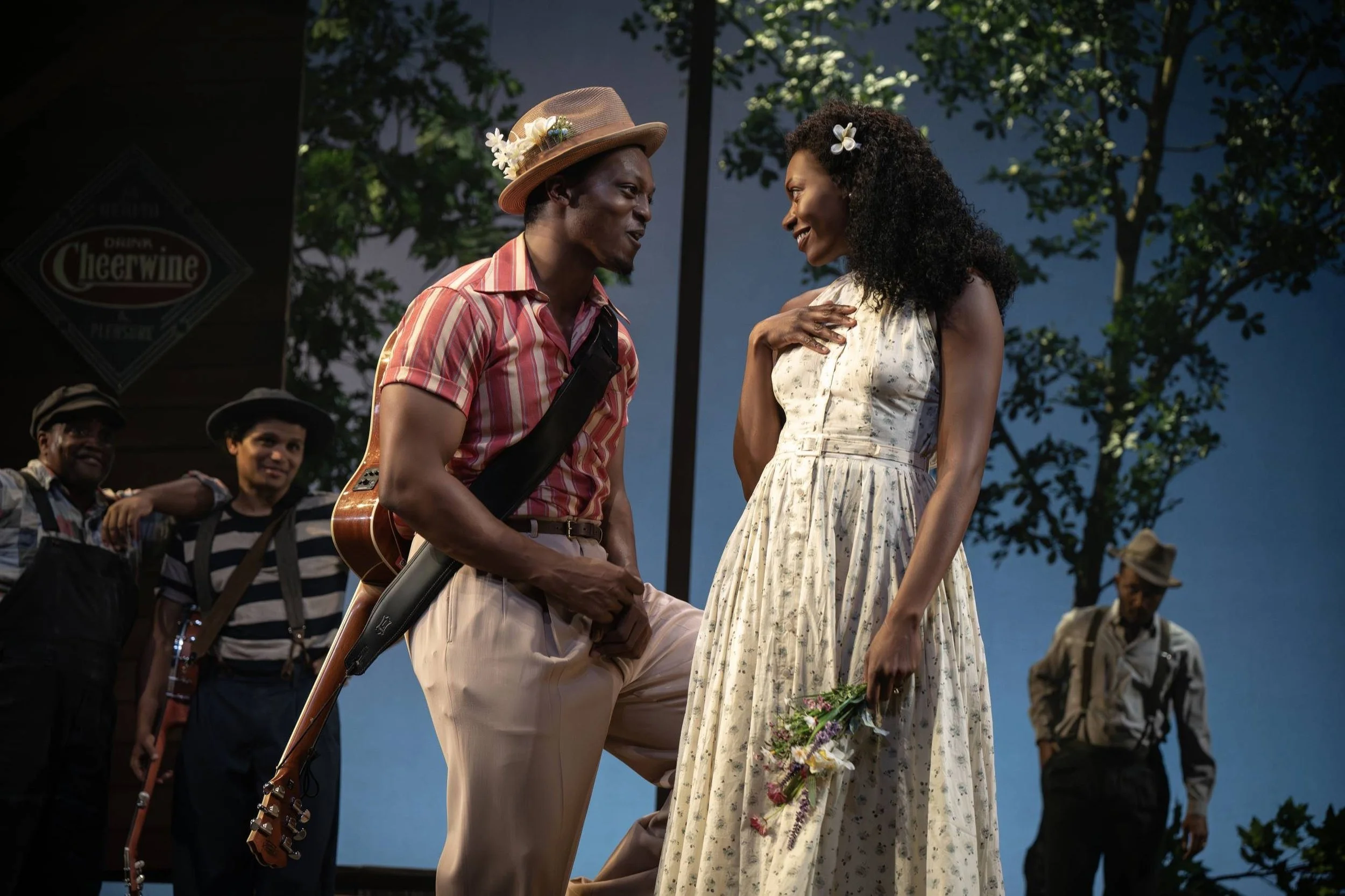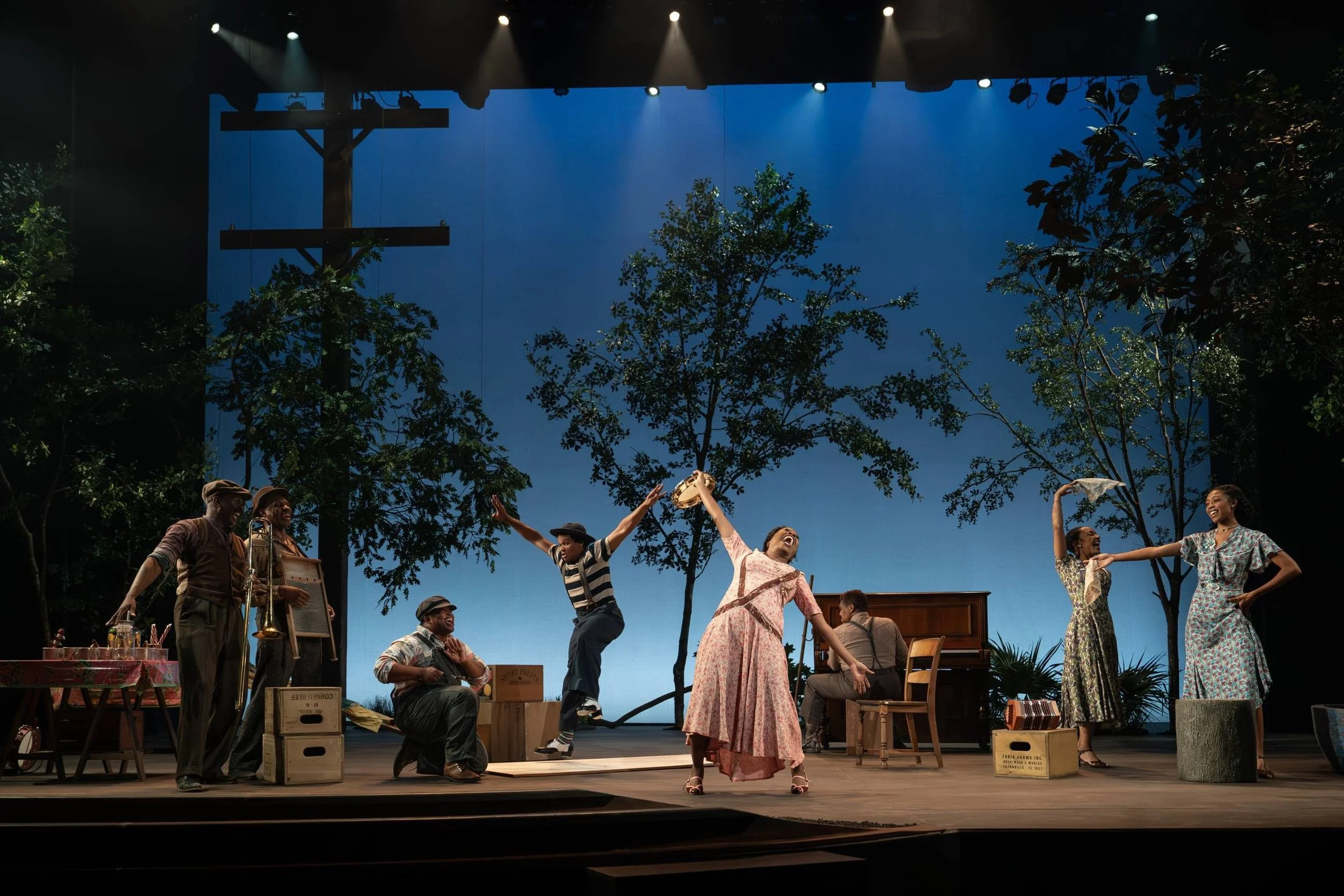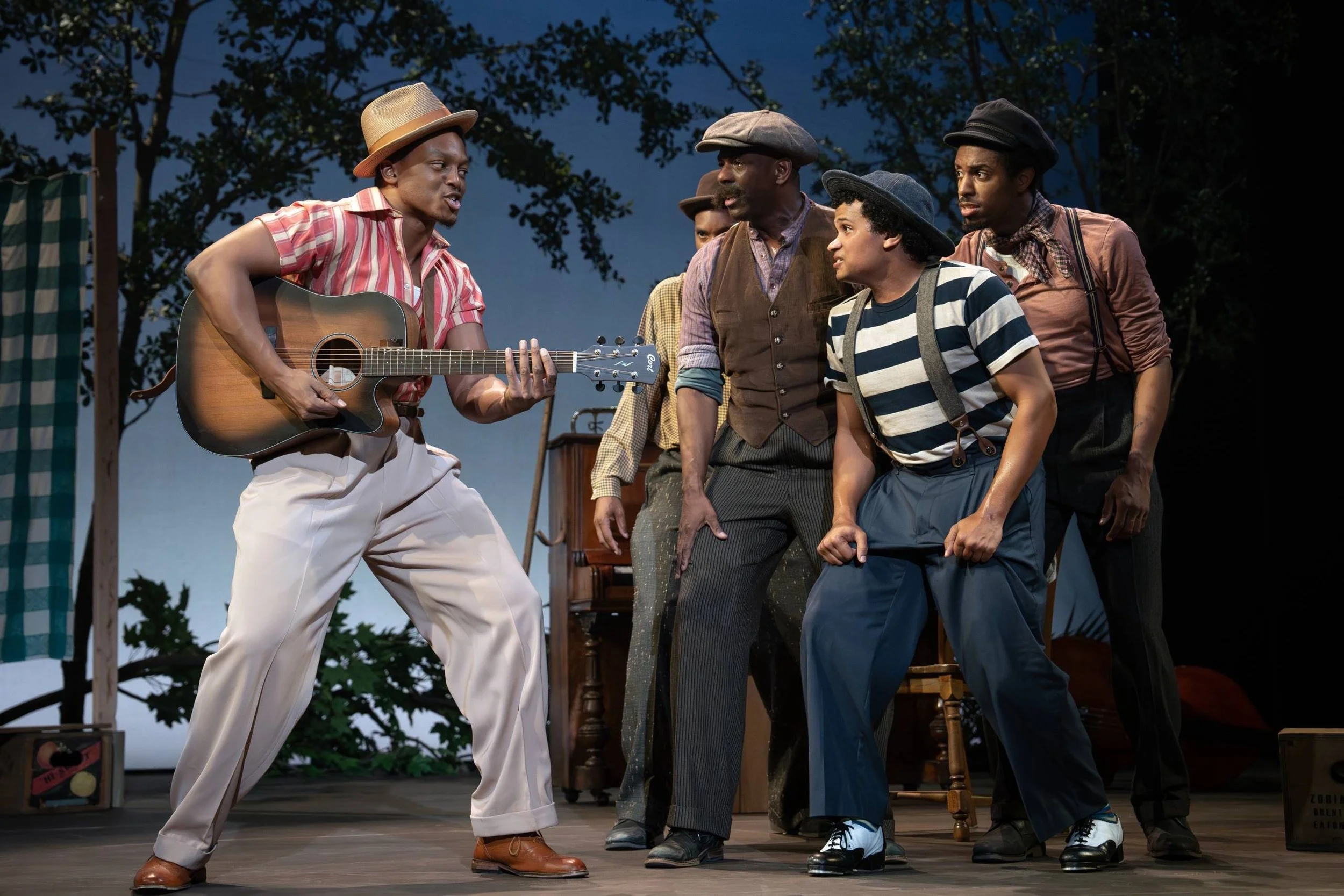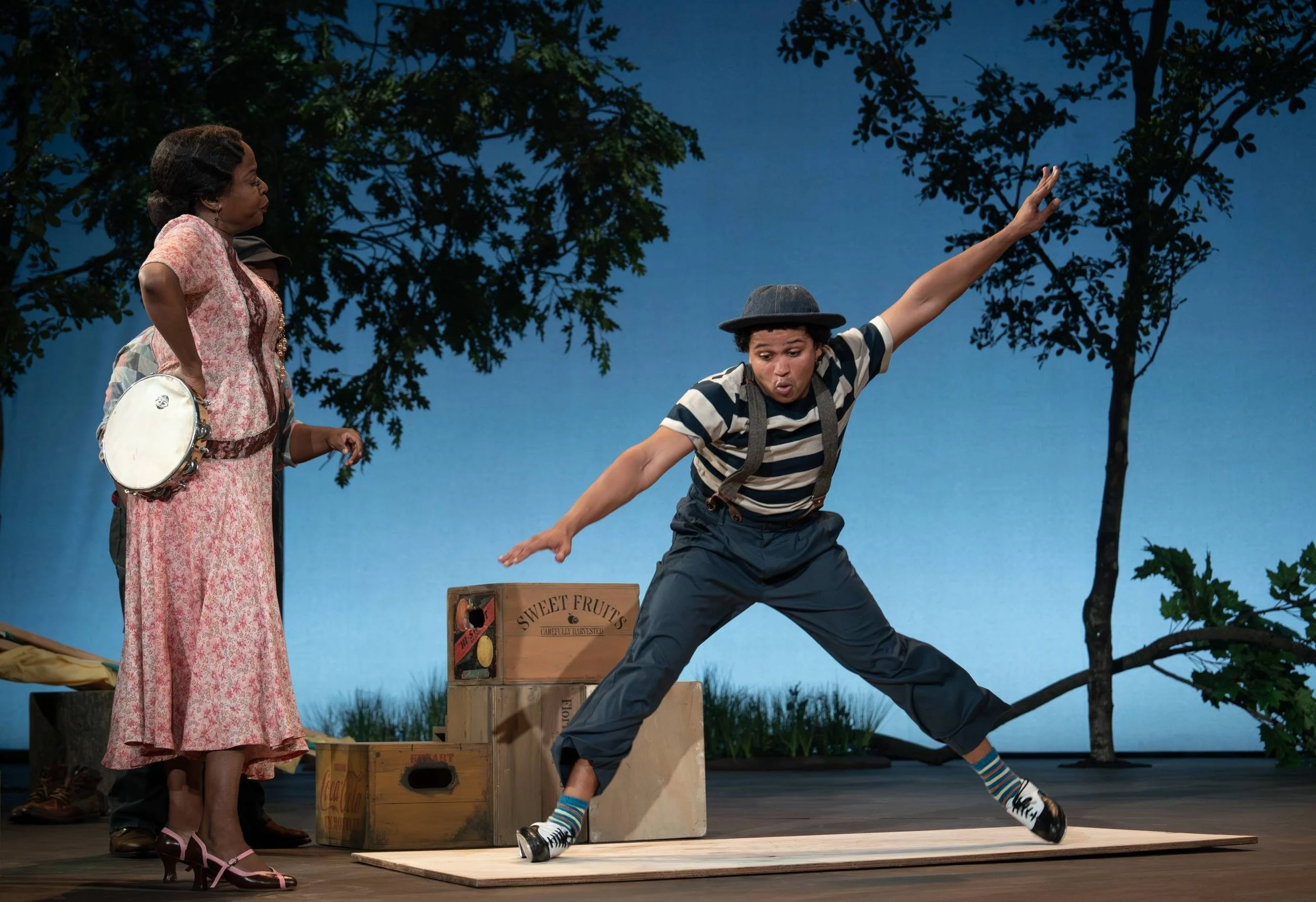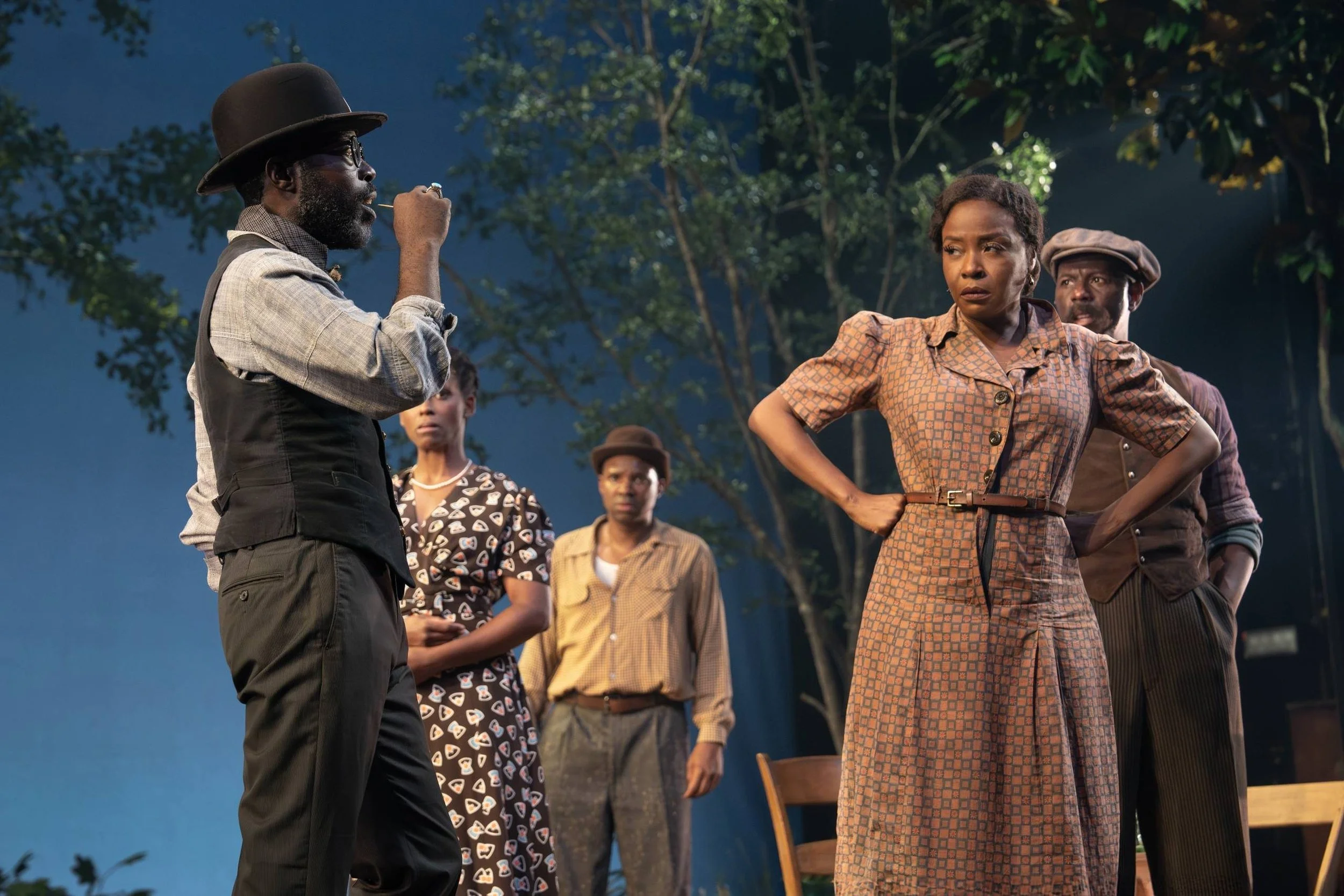Review of Spunk, Yale Repertory Theatre
A newly discovered literary classic is always an exciting find, but when it can be brought to such vibrant life as the current Yale Repertory Theatre production of Zora Neale Hurston's Spunk, it becomes a cause for rejoicing. Hurston, best known for her landmark novel Their Eyes Were Watching God, was an ethnologist who wrote plays and musical theater as well. Her intent was to incorporate the authentic songs of African Americans into a story of community and confrontation, and of love triumphant. But the play, adapted from an early Hurston story in the 1930s, languished among her unpublished papers. Then, early this century, it came to the attention of Catherine Sheehy, professor of Dramaturgy at the David Geffen School of Drama at Yale, who undertook a long-term project to give Spunk its day in the sun. That day is now, through October 25, directed by Tamilla Woodward, with additional songs, new arrangements and music supervision by Nehemiah Luckett and choreography by nicHi douglas.
Foreground: J. Quinton Johnson (Spunk) and Kimber Elayne Sprawl (Evalina) with Isiah Reynolds, Alaman Diadhiou, Mikey Corey Hassel in Zora Neale Hurston’s Spunk, Yale Repertory Theatre; photo by Joan Marcus
The story concerns Spunk, the eponymous hero, talented and charismatic, who drifts by a work-crew and is directed to a job at a sawmill. Soon he's a ladies' favorite, able to court whomever he chooses. His selection of Evalina, who is willing but already married, sets up the play's main dramatic tension. Jim, her husband, confronts them, and his father Hodge is said to be a conjuror, skilled in the ways of hoodoo. Spunk, who believes Evalina is his fated mate, may find that his actions will bring down a baleful curse.
Hurston deliberately chooses characters who seem archetypal. More than simply realistic individuals, they become types necessary to the play's orchestration of how a community reacts to change, threat, and, importantly, love stronger than the usual run-of-the-mill romances they've seen until now. The central fact of the show is song, song as an expression of collective spirit, of joking, of romance, of danger, of work and play and testimony to the Lord's favor. There are many standout numbers—the duet on "Weeping Willow" is particularly graceful—and many of the songs have distinctive folk coloration—"Corn Bread and Molasses," "I Rode Some"—or evocative spiritual meanings—"Sing Ye Sinners," "Gethsemane." The range of songs is remarkable and their roles in the action always significant. Nehemiah Luckett gives new arrangements to many of the songs—"Weeping Willow," "Sing Ye Sinners," "Evalina," "Halimuhfack"—that do much to establish the lyrical tone of the show.
Jeannette Bayardelle (Mrs. Watson), center, with cast members of Zora Neale Hurston’s Spunk, Yale Repertory Theatre; photo by Joan Marcus
There are rollicking numbers and songs of inspiration and everything in between. The plot may seem at times to be subordinate to music, but there is a steady forward movement with recurring motifs—as for instance beginning both Acts with work songs. In the first case, Spunk is an interloper; in the second, his presence is intrinsic to the song and the action. Hurston's ear for speech mannerisms is fine indeed, and often it’s a minor comment or aside that carries the most weight, as when Spunk says, in Act I, "I done got a letter from love and so help me I’ll go to hell but what I answer it," then, in Act II, receives a literal letter that he must risk everything to answer. Banter is a major feature of the dialogue, and the cast is excellent at making the crosstalk feel both real and meaningful, and amusing. A story of one couple's fate, Spunk is even more a story of how social customs create the context in which any life comes to understand itself. We see a town waiting to discover its hero and, in Spunk and Evalina, two people looking for someone who will make the world make sense.
J. Quinton Johnson (Spunk), left, with Shawn Bowers, Correy West, Alaman Diadhiou, Matthew Elijah Webb in Zora Neale Hurston’s Spunk, Yale Repertory Theatre; photo by Joan Marcus
With a cast of fifteen, scenes play out across the entire stage, full of complex action—whether work gangs moving in tandem, a croquet match with plenty of bickering and sassing, a dating game called "a toe party," group dances and card games and, in Act II, a mysterious hoodoo ritual that makes use of dramatic staging, striking projections (Ke Xu, Projection Designer), masks (Kristen Taylor, Costume Designer) and a powerhouse performance by Alaman Diadhiou on djembe. Throughout, John Bronston's music direction is superlative, as is nicHi douglas' choreography, imaginatively weaving together textures of movement, speech and song that define and display the wonderfully affirmative spirit of Hurston's vivacious characters.
Jeannette Bayardelle (Mrs. Watson), Alaman Diadhiou (Blue Trout) in Zora Neale Hurston’s Spunk, Yale Repertory Theatre; photo by Joan Marcus
The cast is the very definition of ensemble acting, and, with everyone playing at least one instrument as well, the making of music is a major contribution to the inspiring effect of live theater fully present. A few key roles/performances should be mentioned by name: J. Quinton Johnson has swagger aplenty as Spunk, but there's a soulful earnestness in his demeanor that keeps him from being confused with an arrogant trifler; as his one-and-only, Kimber Elayne Sprawl is easily his match, weighing her every move in terms of what others will think and how she feels; their early duet, "Halimuhfack," establishes their immediate rapport; Jeannette Bayardelle, besides giving "Sing Ye Sinners" a rousing rendition, plays Mrs. Watson with a deadpan charm; as boisterous clown Willie Joe, Shawn Bowers leads the supporting cast, ably abetted by Alaman Diadhiou's show-boating Blue Trout; Kimberley Marable's disappointed Ruby makes the most of her every chance with Spunk, and Charlie Hudson III's Hodge Bishop closes the first Act with a showstopping rendering of humiliation, hatred, and heartbreak.
Charlie Hudson III (Hodge Bishop), Jeannette Bayardelle (Mrs. Watson), foreground, with Kimberly Marable, Shawn Bowers, Correy West in Zora Neale Hurston’s Spunk, Yale Repertory Theatre; photo by Joan Marcus
Staged with great ingenuity, zestful choreography and lively, busy and varied scenes, full of rhythmic movement in both speech and song, Spunk is clearly a labor of love for all involved and should not be missed. Like the song says, "Drop everything."
Zora Neale Hurston's
Spunk
New songs, arrangements, and music supervision by Nehemiah Luckett
Choreography by nicHi douglas
Directed by Tamilla Woodard
Music Director: John Bronston; Scenic Designer: Karen Loewy Movilla; Costume Designer: Kristen Taylor; Lighting Designer: Gib Gibney; Sound Designer: Justin Ellington; Projection Designer: Ke Xu; Hair Designer: Matthew Armentrout; Production Dramaturgs: Eric M. Glover and Catherine Sheehy; Technical Director: Tom Minucci; Fight and Intimacy Directors: Kelsey Rainwater and Michael Rossmy; Vocal Coach: Julie Foh; Associate Director: Stephanie Rolland; Casting Director: Calleri Jensen Davis; Stage Manager: James Mountcastle
Cast: Jeannette Baryardelle; Shawn Bowers; Tyler Clarke; Alaman Diadhiou; Amahri Edwards-Jones; Janiah-Camile François; Charlie Hudson III; J. Quinton Johnson; Naiqui Macabroad; Kimberly Marable; Christian Pedersen; Isaiah Reynolds; Kimber Elayne Sprawl; Matthew Elijah Webb; Correy West
Yale Repertory Theatre
October 3-25, 2025
